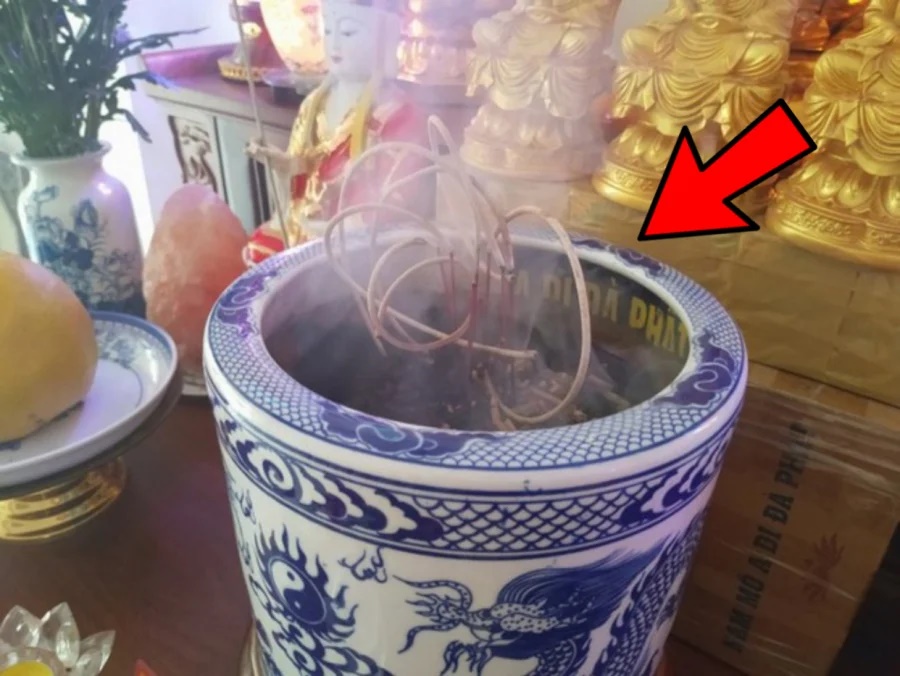When You Notice Your Incense Bowl Has Moved
In feng shui, the incense bowl is a sacred object that requires careful selection. It is especially important on the altar, where the incense bowl must never be moved, even during cleaning. Moving the incense bowl can cause an imbalance and affect the family’s finances and stability. As the incense bowl is a focal point for attracting wealth and prosperity, any changes to its position must be approached with caution.
If you need to move the incense bowl for feng shui purposes or to clean the altar, it is customary to prepare offerings and respectfully ask the deities for their temporary leave. You may also want to offer a prayer for their return once the cleaning is complete.
If the incense bowl has been accidentally moved due to external factors, such as other worship objects falling or animals running by, or even a gust of wind, the homeowner should add more glutinous rice ash to the bowl. Then, use scented water to wipe around the incense bowl to show sincerity and reverence to the deities and to ask for their forgiveness. At the same time, find a way to reposition the incense bowl back to its original spot to avoid altering the family’s energy flow.

3 Signs That Indicate an Immediate Need to Replace the Incense Bowl
When the Incense Bowl Is Cracked or Broken, Replace It Immediately
In feng shui, a cracked or broken incense bowl is considered a bad omen. It signifies financial loss and impending misfortune. It also indicates that the family may encounter various calamities, especially related to the spiritual realm of their ancestors’ graves. Additionally, it hints at potential health issues for family members.
In this case, the homeowner should replace the incense bowl with a new one that is sturdier and more feng shui-friendly. As for the broken pieces of the old bowl, they should be taken to a garden or the ancestral house for burial.

Signs That You Need to Replace Your Incense Bowl to Avoid Financial Loss
When Your Incense Bowl Contains Sand, It’s Time for a Change
According to feng shui beliefs, placing sand in the incense bowl is inappropriate. Sand is considered impure and dusty, making it unsuitable for a sacred space like the incense bowl.
Instead, experts recommend using glutinous rice ash made from the straw and husks of glutinous rice. This type of ash is preferred because of its rustic and simple nature, reflecting the agricultural lifestyle of Vietnamese farmers. Additionally, glutinous rice ash has several beneficial properties that make it ideal for holding incense sticks firmly in place. It is light, fluffy, and has a deep, glossy black color.
Using glutinous rice ash demonstrates respect and reverence for the deities and ancestors.
(*) The information in this article is for reference only and should be considered experimental!
The Four Absolute No-Goes in Feng Shui: A Guide to the Worst Plot Forms and How to Avoid Them
 Feng Shui: A Guide to the Worst Plot Forms and How to Avoid Them’>
Feng Shui: A Guide to the Worst Plot Forms and How to Avoid Them’>In the world of Feng Shui, it is believed that there are four types of land formations that are considered extremely inauspicious. It is strongly advised to avoid purchasing properties with these unfavorable land features.


































